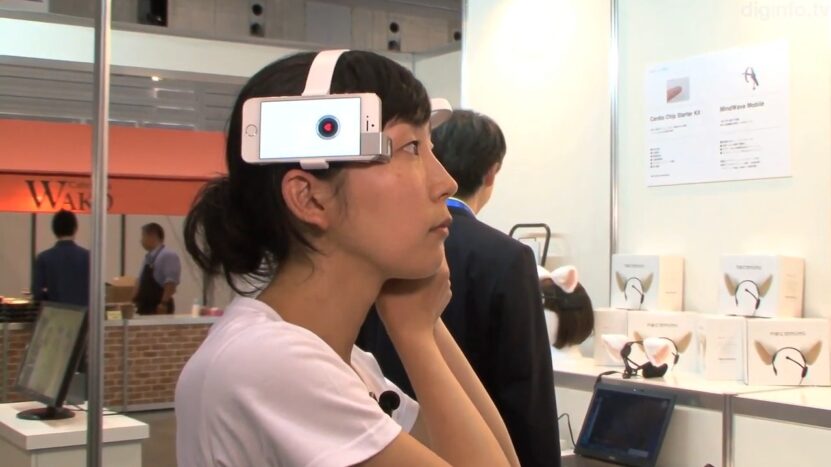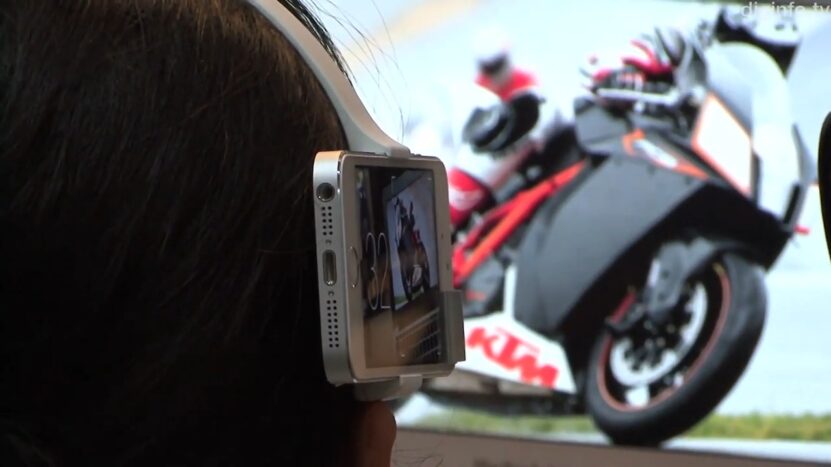The Neurocam is the world’s first wearable camera system that automatically records what interests you.
It consists of a headset with a brain-wave sensor and connects to an iPhone. The system estimates whether you’re interested in something from the brain waves captured by the sensor, and uses the iPhone’s camera to record the scenes that appear to interest you.
Just buy wearing the Neurocam, the scenes you have shown an interest in are recorded automatically, and are added to an album which you can look through later.

“Right now, the iPhone’s camera is ready to record what’s in my line of sight through a prism. The iPhone shows what the camera has captured, so it feels as if it’s reading my mind. My brain waves are analyzed by an iPhone app, which quantifies my level of interest on a scale from 0 to 100. If the level exceeds 60, the number turns red, and the camera starts to record automatically, producing a 5-second GIF animation.”
“We’re using the iPhone so that analysis and capture can be done with one device. But this is still a concept model. So, we think there are lots of possibilities, such as turning this into a wearable camera.”
Neurocam arose from the neuro wear project, which is involved with items that use brain waves and bio-sensors, like necomimi, which works using brain waves. The algorithm for quantifying brain waves was co-developed with Associate Professor Mitsukura at Keio University.
In the future, the project team aims to create an emotional interface, which could link a range of devices and services to people’s individual thoughts and feelings.
“Because this system is hands-free, we think it could capture a life log, which would be different from deliberately pressing a shutter to capture things you like. As an application in a B2B environment, Neurocam could determine what goods in stores interest people. And because the information includes position data, you can do mapping, so it could also show what places people are interested in as an aid for urban development planning. We think it could be used in lots of ways like that.”

